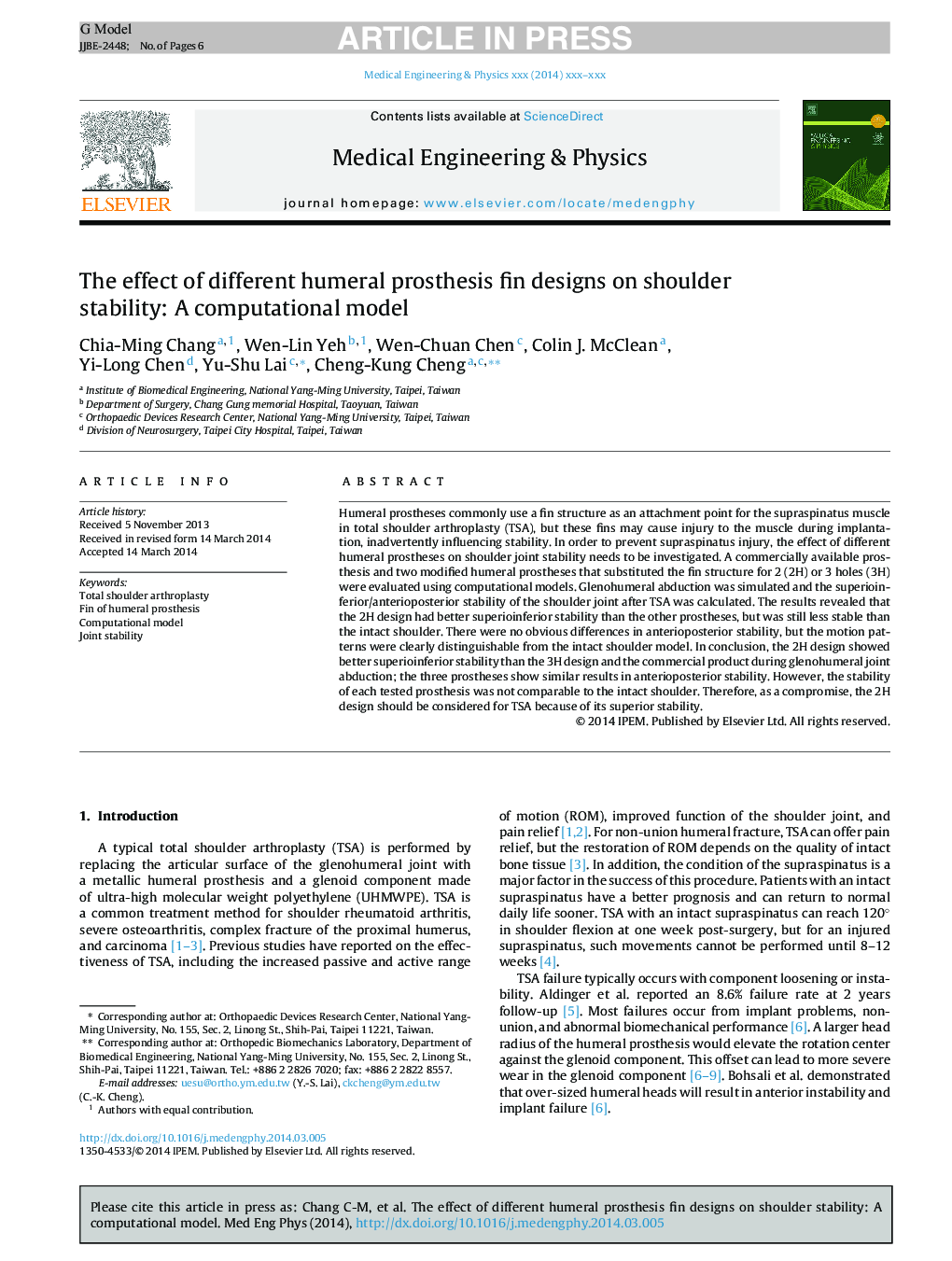| Article ID | Journal | Published Year | Pages | File Type |
|---|---|---|---|---|
| 10435055 | Medical Engineering & Physics | 2014 | 6 Pages |
Abstract
Humeral prostheses commonly use a fin structure as an attachment point for the supraspinatus muscle in total shoulder arthroplasty (TSA), but these fins may cause injury to the muscle during implantation, inadvertently influencing stability. In order to prevent supraspinatus injury, the effect of different humeral prostheses on shoulder joint stability needs to be investigated. A commercially available prosthesis and two modified humeral prostheses that substituted the fin structure for 2 (2H) or 3 holes (3H) were evaluated using computational models. Glenohumeral abduction was simulated and the superioinferior/anterioposterior stability of the shoulder joint after TSA was calculated. The results revealed that the 2H design had better superioinferior stability than the other prostheses, but was still less stable than the intact shoulder. There were no obvious differences in anterioposterior stability, but the motion patterns were clearly distinguishable from the intact shoulder model. In conclusion, the 2H design showed better superioinferior stability than the 3H design and the commercial product during glenohumeral joint abduction; the three prostheses show similar results in anterioposterior stability. However, the stability of each tested prosthesis was not comparable to the intact shoulder. Therefore, as a compromise, the 2H design should be considered for TSA because of its superior stability.
Related Topics
Physical Sciences and Engineering
Engineering
Biomedical Engineering
Authors
Chia-Ming Chang, Wen-Lin Yeh, Wen-Chuan Chen, Colin J. McClean, Yi-Long Chen, Yu-Shu Lai, Cheng-Kung Cheng,
